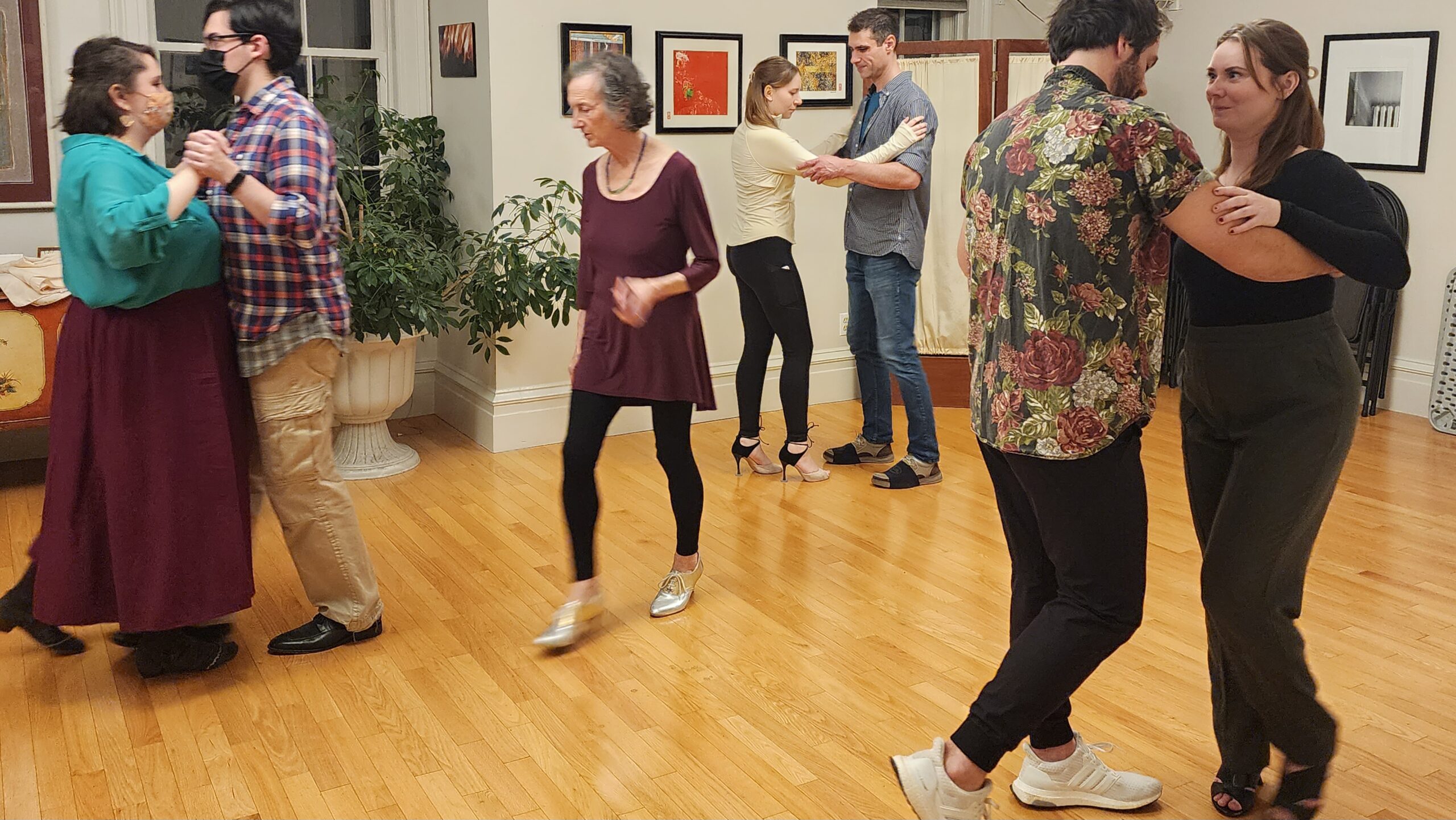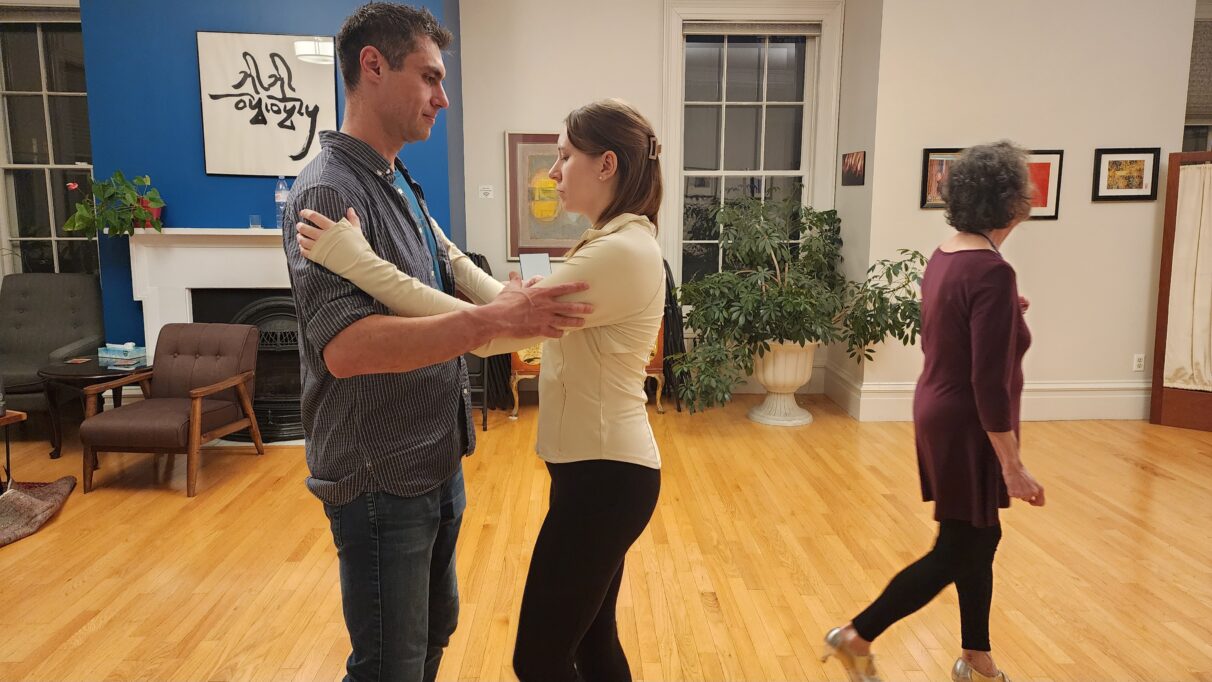Argentine Tango steps into Halifax dance scene
Margaret Spore moved to Halifax from Colorado to begin a dance community

caption
Instructor Margaret Spore (centre) has been teaching Argentine tango since 2003 in Nova Scotia.Music fills the room as Margaret Spore’s students step counterclockwise with their partners around the floor to get used to the rhythm.
Once comfortable they communicate with each other through their movement and body language, also known by Argentine tango dancer and choreographer Juan Carlos Copes as “one heart and four legs.”
This is what Argentine tango is.
Spore is both a dance instructor and founder of Tangonova, with a background in improvisational dance and a degree in dance movement therapy. Spore’s goal with Tangonova is to introduce a community to Argentine tango like she experienced in Colorado.
Historically, Argentine tango comes from the 19th century with a mix of waltz, polka, and milonga. Over time the music evolved from regional rhythms and classical dance music from Europe, to what we know now, with a tango orchestra including guitar, drums and vocalists.
This is unique compared to other tango styles because of its improvisational footwork. It doesn’t rely on an eight-count like ballroom tango would. This adds a challenge for dancers at all levels when it comes to Argentine tango.
Spore was introduced to Argentine tango by a dance couple in Colorado for a weekend class in 1994. She joined them on their annual dance trip to Buenos Aires and was ‘very taken’ by their partner dancing techniques. She then joined them the following year as well.
“I took the trip to Buenos Aires two years in a row,” said Spore. “A whole lot of people from the dance community in Colorado also went on that trip. So, we started an Argentine tango scene there.”
Spore has been teaching Argentine tango in Halifax since 2003. Spore opens her classes to both couples and individuals so that everyone has an equal opportunity to learn the intimate dance.
“The healthiest tango communities are made up of a combination of couples and singles. Rotation has always been the norm in classes and communities,” said Spore. “When people go dancing, even if they have a specific partner, they ask other people to dance. That’s kind of the custom.”
Spore is trying to rebuild the Argentine tango scene, which diminished during the pandemic. Regular dancers also began moving from Halifax for new opportunities or to start up their own tango classes.
“The pandemic impacted it quite a bit,” said Spore. “So, that’s just something that we have to rebuild if possible.”
Recently, Spore has started Argentine tango lessons for both new and experienced dancers. The lessons go from Nov. 8 to Dec. 6 at the Halifax Shambhala Centre on Tower Road.

caption
Vadim Millerman and Elizabeth Burton practise footwork in a recent class.Elizabeth Burton, a one of six participants in Spore’s classes, was happy to learn that lessons were available in Halifax.
“I’ve been wanting to try Argentine tango for a long time,” said Burton. “I’m happy to finally get the chance to learn it a lot more in depth.”
Burton, who has a background in swing, formal partner dancing, bachata and many more styles, finds the class similar to other genres she’s done.
Vadim Millerman, a complete beginner to dance, found the atmosphere of the class to be very welcoming to all class participants.
“I had this idea in my mind that I wanted to do it. I thought that it wouldn’t happen because I’m too terrible at dancing,” said Millerman. “Then I came here, and I feel like I have a lot to learn but the environment was very encouraging.”
Burton took salsa classes at Haliente dance studio prior to Argentine tango, which she finds to be similar in their Latin roots.
“It’s kind of similar to the other Latin styles, it’s really flowy in the way that you move,” said Burton. “You’re not bouncing like you would be in Lindy Hop, but it’s different in the sense of salsa and bachata that you get those Latin hips in.”
After two weeks, Millerman said he’s already thinking of pursuing dance in the future.
“I had this belief that ‘I’m going to try these lessons, but I can’t really learn how to dance,’ ” said Millerman. “But now I’m thinking maybe it’s possible that I can, which is kind of nice.”
About the author
Kate Barrio
Kate is a fourth-year Journalism student in the BJH program at the University of King's College from Moncton, N.B.
